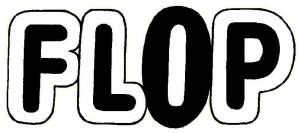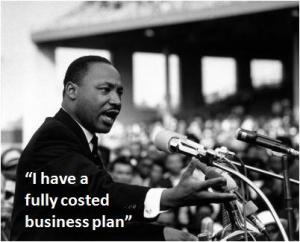 Henry Ford once said “if you think you’re not creative, you’re not”. Creativity isn’t natural born or God-given. It’s not in the exclusive gift of painters, writers, graphic designers and those in the performing arts. It’s in us all (yes, even you). The bad news is that school and work suppress creativity, so as we get older we lose the opportunity and encouragement to be creative and we begin to feel we (i) can’t do it and (ii) shouldn’t do it. The good news however is that creativity can easily be reawakened. And the start point is to change how you see the world.
Henry Ford once said “if you think you’re not creative, you’re not”. Creativity isn’t natural born or God-given. It’s not in the exclusive gift of painters, writers, graphic designers and those in the performing arts. It’s in us all (yes, even you). The bad news is that school and work suppress creativity, so as we get older we lose the opportunity and encouragement to be creative and we begin to feel we (i) can’t do it and (ii) shouldn’t do it. The good news however is that creativity can easily be reawakened. And the start point is to change how you see the world.
Creative people seek difference. They look for the things that others don’t see. Our brain – when faced with a stimulus – will always take the path of least resistance. Have I faced this situation before? If so, what did I do last time? What connections already exist? This obsession with familiarity enables our brain to cope with some ambiguity. It’s why we can easily read the famous passage below, even with the letters mixed up (incidentally, the research referred to is made-up).

So our brain will do its best to use its existing database rather than seek new data. The trick therefore, as creative people know, is to break the pattern and establish new connections. That may mean deliberately changing your normal behaviour – physically sitting in a different seat to see things from a new perspective, changing your normal routines (a different route to work?) or thinking laterally. Take a look at word below. What word do you see – flip, or is it flop? Your brain will jump to a conclusion but is it the only conclusion?

Now look at the FedEx logo below – a very familiar brand to all of us. But most us look at the image (the stimulus) and just say “oh yeah, it’s the FedEx logo”. How many of us see the ‘hidden’ brand icon – the image that defines FedEx’s business – within the logo? Yes, you’ve got it – the white arrow between the E and the X. That’s because we instinctively look at the letters not what’s within the letters.

Study the picture below and find the hidden tiger. Give yourself 60 seconds.

We can all see an image of a tiger in a jungle, right? But I said look for the hidden tiger. Instinctively, most of us will look for another image of a tiger hidden in the bushes – some of us will even insist we can see one in the leaves. The answer, if you look closely, is in the stripes of the tiger. I didn’t say look for a picture of a hidden tiger. I just said find the hidden tiger. It’s that pesky brain again, making us do what we’ve always done.
We’re not always in control of our brain, it does most of its work without us (so to speak) so sometimes we need to train ourselves to open our eyes and seek those new patterns, those new stimuli. Try it next time you’re out and about. I guarantee you won’t look at the FedEx logo in the same way again.
More next week.
 It’s Friday and I’m feeling a bit mischievous. I’ve been a bit overwhelmed by business-speak in the last few days working on some big projects and my mind has gone a bit hazy. I found myself wondering what some of life’s most memorable quotations would have looked like if they had been spoken in a corporate environment by true hardcore jargon jockeys. What if Churchill had an MBA? What if Gandhi had come from a career in IT? What if Schwarzenegger’s cyborg assassin had been programmed by a middle manager? What if the language of the office was the language of the world? Here then, ladies and gentlemen, is my top ten:
It’s Friday and I’m feeling a bit mischievous. I’ve been a bit overwhelmed by business-speak in the last few days working on some big projects and my mind has gone a bit hazy. I found myself wondering what some of life’s most memorable quotations would have looked like if they had been spoken in a corporate environment by true hardcore jargon jockeys. What if Churchill had an MBA? What if Gandhi had come from a career in IT? What if Schwarzenegger’s cyborg assassin had been programmed by a middle manager? What if the language of the office was the language of the world? Here then, ladies and gentlemen, is my top ten: I had some time to kill the other day while sitting in the car, so I did something only a man would do. I made a list. I decided to go though my iPod and make a list of songs about communication. So, for absolutely no reason whatsoever, beyond self-indulgence, here it is …
I had some time to kill the other day while sitting in the car, so I did something only a man would do. I made a list. I decided to go though my iPod and make a list of songs about communication. So, for absolutely no reason whatsoever, beyond self-indulgence, here it is … I don’t have a Facebook account and I’ve never used Twitter. Does that make me unemployable and socially inept? A bit weird even? And as a communications professional, am I wrong to not embrace the social networking tools that will increasingly dominate the internal corporate communications environment? Should I be worried? Apparently, employers are increasingly using Facebook to check on the ‘back story’ of job applicants … to see what they are ‘really like’. In the US, some employers have made staff hand over their passwords or ‘friend’ their bosses so they can be snooped on. Some commentators are even suggesting that people without Facebook accounts are loners and potentially dangerous, based on the apparent fact that a number of recent serial killers, including the Norwegian mass murderer Anders Breivik, didn’t use Facebook. Oh, how lovely. In my defence, I am a big user of LinkedIn for professional networking purposes, and as you can see, I do blog … so I’m not a complete Luddite (actually the English Luddite movement of the 19th century is misunderstood. The Luddites weren’t anti-machinery for the sake of it, they were protesting against the exploitation of workers and the lowering of standards caused by the introduction of textile machinery). It’s just that Facebook has never been an attraction to me*. I really value friendship and so maybe there’s a part of me that worries that having lots of virtual ‘friends’ will devalue the currency of my ‘proper’ friends. I dunno, I’m no psychiatrist. So is there something wrong with me? A recent study in Australia examined the personalities of people with and without Facebook accounts. People with an account were found to be more extraverted and narcissistic, whereas those without an account were found to be more conscientious and shyer. They found that those without an account experienced more social loneliness, but those with an account experienced more family loneliness. I can see the logic there actually. So what are we to deduce from this? If you use Facebook, chances are you’re more outgoing and sociable – probably quite confident and maybe even a little egotistical. For some employers, that’s a good set of characteristics. On the other hand, if you don’t use Facebook, you may be more hard working and more focused on the job – equally attractive qualities. So should us non-users be stigmatised or celebrated? Personally I don’t care, but as social networking increases its profile in the workplace, I do think we need to remind ourselves that organisations, like communities, are made up of many different personality types. The integration and mix of channels will be just as important in the future as it’s been in the past.
I don’t have a Facebook account and I’ve never used Twitter. Does that make me unemployable and socially inept? A bit weird even? And as a communications professional, am I wrong to not embrace the social networking tools that will increasingly dominate the internal corporate communications environment? Should I be worried? Apparently, employers are increasingly using Facebook to check on the ‘back story’ of job applicants … to see what they are ‘really like’. In the US, some employers have made staff hand over their passwords or ‘friend’ their bosses so they can be snooped on. Some commentators are even suggesting that people without Facebook accounts are loners and potentially dangerous, based on the apparent fact that a number of recent serial killers, including the Norwegian mass murderer Anders Breivik, didn’t use Facebook. Oh, how lovely. In my defence, I am a big user of LinkedIn for professional networking purposes, and as you can see, I do blog … so I’m not a complete Luddite (actually the English Luddite movement of the 19th century is misunderstood. The Luddites weren’t anti-machinery for the sake of it, they were protesting against the exploitation of workers and the lowering of standards caused by the introduction of textile machinery). It’s just that Facebook has never been an attraction to me*. I really value friendship and so maybe there’s a part of me that worries that having lots of virtual ‘friends’ will devalue the currency of my ‘proper’ friends. I dunno, I’m no psychiatrist. So is there something wrong with me? A recent study in Australia examined the personalities of people with and without Facebook accounts. People with an account were found to be more extraverted and narcissistic, whereas those without an account were found to be more conscientious and shyer. They found that those without an account experienced more social loneliness, but those with an account experienced more family loneliness. I can see the logic there actually. So what are we to deduce from this? If you use Facebook, chances are you’re more outgoing and sociable – probably quite confident and maybe even a little egotistical. For some employers, that’s a good set of characteristics. On the other hand, if you don’t use Facebook, you may be more hard working and more focused on the job – equally attractive qualities. So should us non-users be stigmatised or celebrated? Personally I don’t care, but as social networking increases its profile in the workplace, I do think we need to remind ourselves that organisations, like communities, are made up of many different personality types. The integration and mix of channels will be just as important in the future as it’s been in the past.
